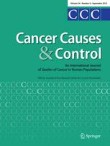
Abstract
Objective
Relative to urban populations, rural patients may have more limited access to care, which may undermine timely bladder cancer (BCa) diagnosis and even survival.
Methods
We tested the effect of residency status (rural areas [RA < 2500 inhabitants] vs. urban clusters [UC ≥ 2500 inhabitants] vs. urbanized areas [UA, ≥50,000 inhabitants]) on BCa stage at presentation, as well as on cancer-specific mortality (CSM) and other cause mortality (OCM), according to the US Census Bureau definition. Multivariate competing risks regression (CRR) models were fitted after matching of RA or UC with UA in stage-stratified analyses.
Results
Of 222,330 patients, 3496 (1.6%) resided in RA, 25,462 (11.5%) in UC and 193,372 (87%) in UA. Age, tumor stage, radical cystectomy rates or chemotherapy use were comparable between RA, UC and UA (all p > 0.05). At 10 years, RA was associated with highest OCM followed by UC and UA (30.9% vs. 27.7% vs. 25.6%, p < 0.01). Similarly, CSM was also marginally higher in RA or UC vs. UA (20.0% vs. 20.1% vs. 18.8%, p = 0.01). In stage-stratified, fully matched CRR analyses, increased OCM and CSM only applied to stage T1 BCa patients.
Conclusion
We did not observe meaningful differences in access to treatment or stage distribution, according to residency status. However, RA and to a lesser extent UC residency status, were associated with higher OCM and marginally higher CSM in T1N0M0 patients. This observation should be further validated or refuted in additional epidemiological investigations.



No comments:
Post a Comment